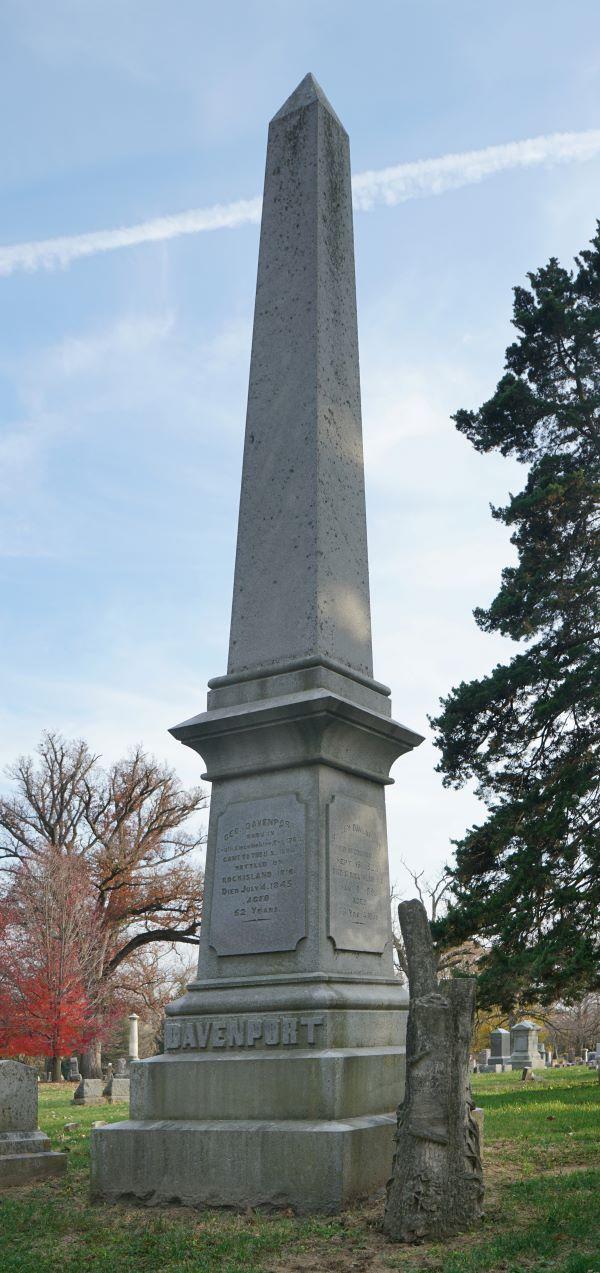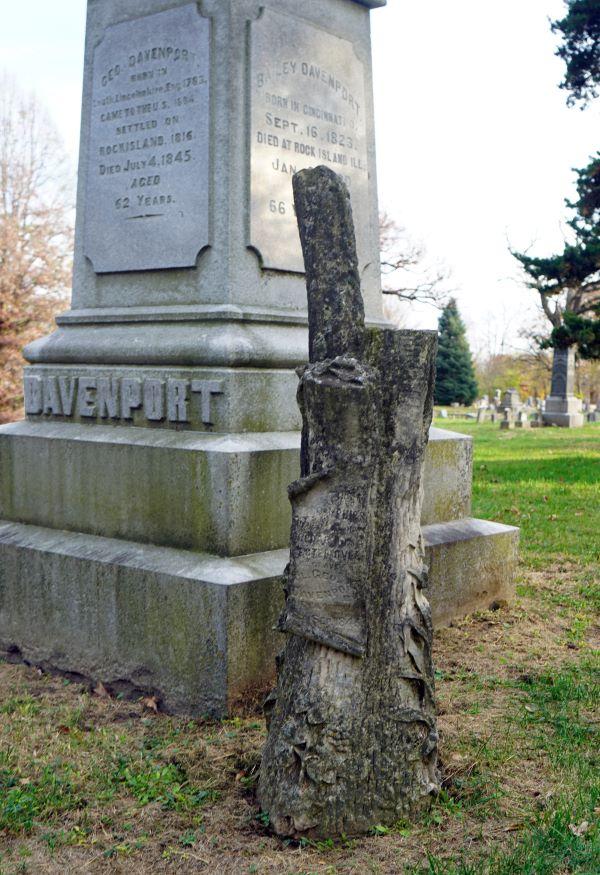
Colonel George Davenport drawing by Bruce Walters
George Davenport traveled with an army expedition in 1816 to establish a frontier military outpost on the Mississippi River. The outpost would be built on a wooded island within several miles of Native American villages. The military estimated that 10,000 people lived these villages.
This island is known to us as the Rock Island Arsenal. Neither Illinois nor Iowa were states when Davenport arrived.
Davenport was an adventurer. He had already traveled to European seaports as a merchant sailor, was imprisoned in Russia for a winter, and had served as a sergeant in the War of 1812. Along the way, he changed his name from John King to George Davenport for reason unknown to us.
Traveling by foot, canoe, keel boat or horseback, Davenport visited Indian villages to trade provisions for furs. Described as a jovial, generous man who was fond of company, he developed friendly relationships with the Native Americans. In particular, Black Hawk saw in him a sense of humanity and justice that stood in contrast to the military officers. The two men sometimes visited each other's homes and maintained cordial relations, even as tensions rose -culminating in the Indian Removal Act of 1930 and the ensuing Black Hawk War in 1832. During the war, Davenport was given the rank of colonel by Illinois’ governor.

Davenport made a fortune as a fur trader, allowing him to purchase great tracts of land. In 1833, he built the first settler’s home in the region that wasn’t a log cabin. There, he hosted meetings where towns were planned, and businesses created. He helped to plat the city of Davenport, which would be named Stephenson, and then renamed Rock Island. He again laid out a city to be named Davenport. This time, on the western side of the Mississippi River. The city still bears his name. He was one of the early planners of the railroad that would cross the Mississippi River from Arsenal Island.
On the Fourth of July, 1845, Davenport was murdered in his home by men who thought he had $20,000 in his home. He didn’t. He lived long enough to identify the men. Three of his assailants were hung from gallows in Rock Island before a crowd three-times the city’s population. Two others escaped.
According to the Davenport Gazette, Davenport was buried on the island near his home “in a beautiful spot, overshadowed by a large oak tree.”

Mesquakie Indians later held a funeral ceremony for their murdered friend at his grave. According to Regina Schantz’ biography, ‘The Trader at Rock Island,’ the ceremony was “an acknowledgment of the long friendship the Mesquakie had with George Davenport. The braves asked the Great Spirit to make Davenport happy in the Spirit Land, and to make their Sioux enemies, whom they had slain in battle, Davenport’s servant in the Spirit Land.” As part of the ceremony, a cedar post was painted with headless figures (the slain enemy) and two warriors. Though not on display, this post is housed in the John Hauberg Museum at the Black Hawk Historic Site in Rock Island.
Davenport’s son Bailey had his body reinterred at Chippiannock Cemetery on May 10, 1864. His grave is close to an imposing stone obelisk with the name “Davenport” that commands attention. But what holds your attention is the nearby stone marker in the form of a tree stump. “Over the grave of Col Davenport” are among the few decipherable words on it. The tree seems to refer to the original grave’s placement under an oak tree. Its broken limbs symbolize a life cut short.
Bruce Walters is a Professor Emeritus in Art conferred by Western Illinois University.
This is part of an occasional series on famous (or infamous) people buried in cemeteries in the Quad Cities, and their history that is not so well-known today. If there’s a piece of history buried here that you’d like to learn more about, e-mail the location and a brief description to BD-Walters@wiu.edu.








